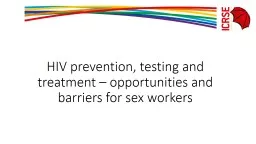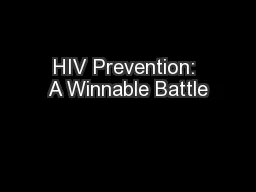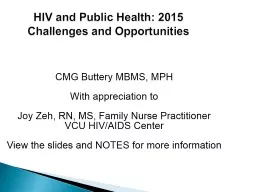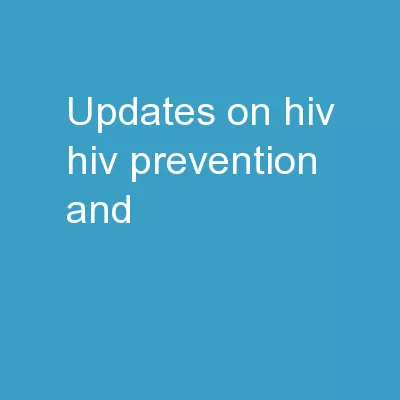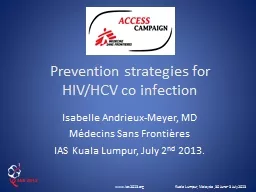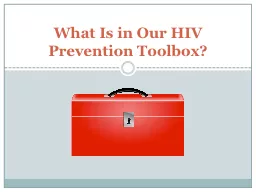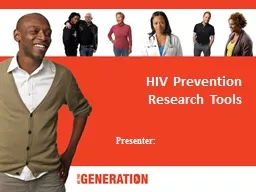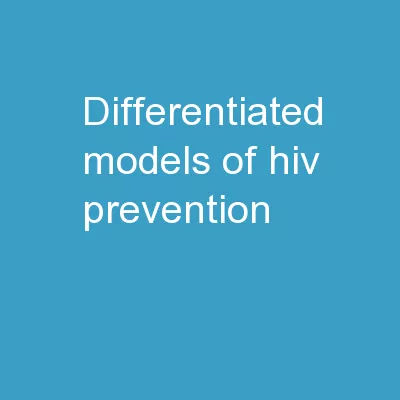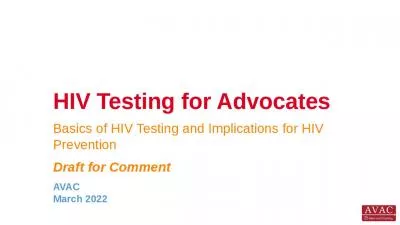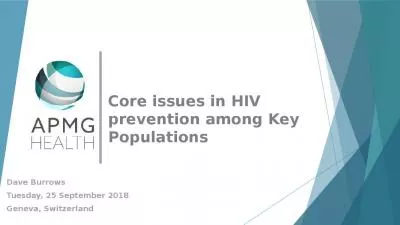PPT-HIV prevention, testing and treatment – opportunities and
Author : phoebe-click | Published Date : 2017-07-27
Introduction Access to HIV services as key component of HIV response among sex workers Vital elements of HIV prevention and care continuum HIV prevention testing
Presentation Embed Code
Download Presentation
Download Presentation The PPT/PDF document "HIV prevention, testing and treatment �..." is the property of its rightful owner. Permission is granted to download and print the materials on this website for personal, non-commercial use only, and to display it on your personal computer provided you do not modify the materials and that you retain all copyright notices contained in the materials. By downloading content from our website, you accept the terms of this agreement.
HIV prevention, testing and treatment – opportunities and: Transcript
Download Rules Of Document
"HIV prevention, testing and treatment – opportunities and"The content belongs to its owner. You may download and print it for personal use, without modification, and keep all copyright notices. By downloading, you agree to these terms.
Related Documents

